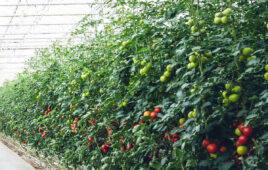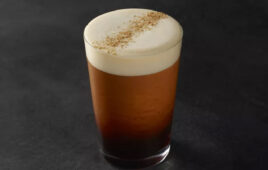 Craft beer, a term used to differentiate from mass-produced beers, has been around for centuries but has only become popular in recent years. A craft beer is one made by a smaller brewer with a greater focus on the taste, appearance, quality and uniqueness of the beer over bigger, mainstream brand options. These microbreweries focus less on mass production and more on the quality of the beer.
Craft beer, a term used to differentiate from mass-produced beers, has been around for centuries but has only become popular in recent years. A craft beer is one made by a smaller brewer with a greater focus on the taste, appearance, quality and uniqueness of the beer over bigger, mainstream brand options. These microbreweries focus less on mass production and more on the quality of the beer.
The word ‘craft’ is used to describe an art or trade that requires a special, usually manual skill and a term that has evolved to describe a food or beverage made with such abilities. Although it is a title that is defined and redefined annually by the Brewers Association, a trade group of brewers and brewery owners all over the country. By the standards of the Brewers Association, a craft brewery may produce up to six million barrels of beer per year. This figure has been revised upwards several times as craft brewers have hit the previous threshold. Craft brewers must also be independent. Less than 25 percent of the brewery is owned or controlled by a beverage alcohol industry member that is not itself a craft brewer. Lastly, a craft brewery must be traditional with an output that is primarily beer, no hard seltzer companies.
Craft beer is different from mainstream beers in many ways, with noticeable differences in the production process and used ingredients. In most cases, big breweries use cheap ingredients to make mass-produced beer to reduce the final product price. They often use rice or corn instead of hops to cut costs and rely on standardized recipes produced by large corporations. Craft brewers are passionate about their craft and take pride in creating unique, authentic beers and using only the finest ingredients, such as malted barley and hops for a more complex flavor. Craft brewers have the ability to control what goes into each bottle of craft beer, resulting in more flavorful beer and far more diverse options, such as IPAs, dark ales, red ales and lagers.
Craft brewers are known for setting themselves apart through unique and individual touches. Due to the limited involvement and interest of non-craft brewers, craft brewers have the ability to stay independent and true to themselves without outside influence. While craft brewers are known to place their own spins on the beverage, they still tend to abide by traditional beer-brewing ingredients and avoid using additives like rice and corn to speed up the process. The tastes and flavors often incorporated in craft beers are highly valued and appreciated by its drinkers.
When many people think ‘craft beer,’ they think local. Coincidentally, craft brewers are often located within ten miles of most communities. Craft brewers are often well-established within their communities and give consumers the opportunity to support local, small businesses. Instead of appealing to the broader audience, such as the large brewers usually do, craft brewers typically choose to appeal to a more local and defined audience.
Crafted beer opens the door to greater experimentation and greater variety overall, with each brewery able to tailor their beer to a particular image or philosophy. With far more flavor, better options and room for constant improvement, it’s obvious why crafted beer is becoming the preferred choice over mass-produced beers.




